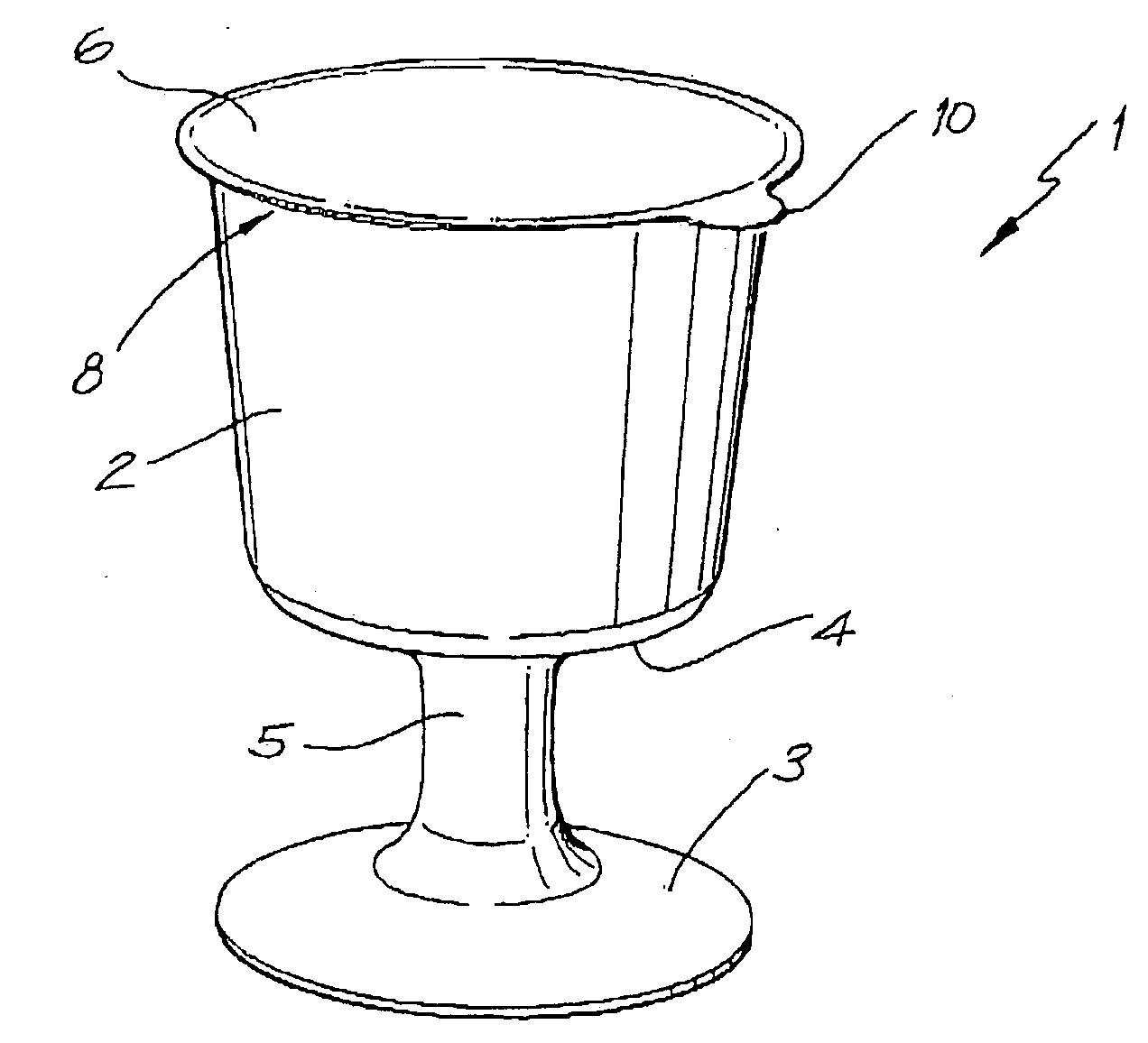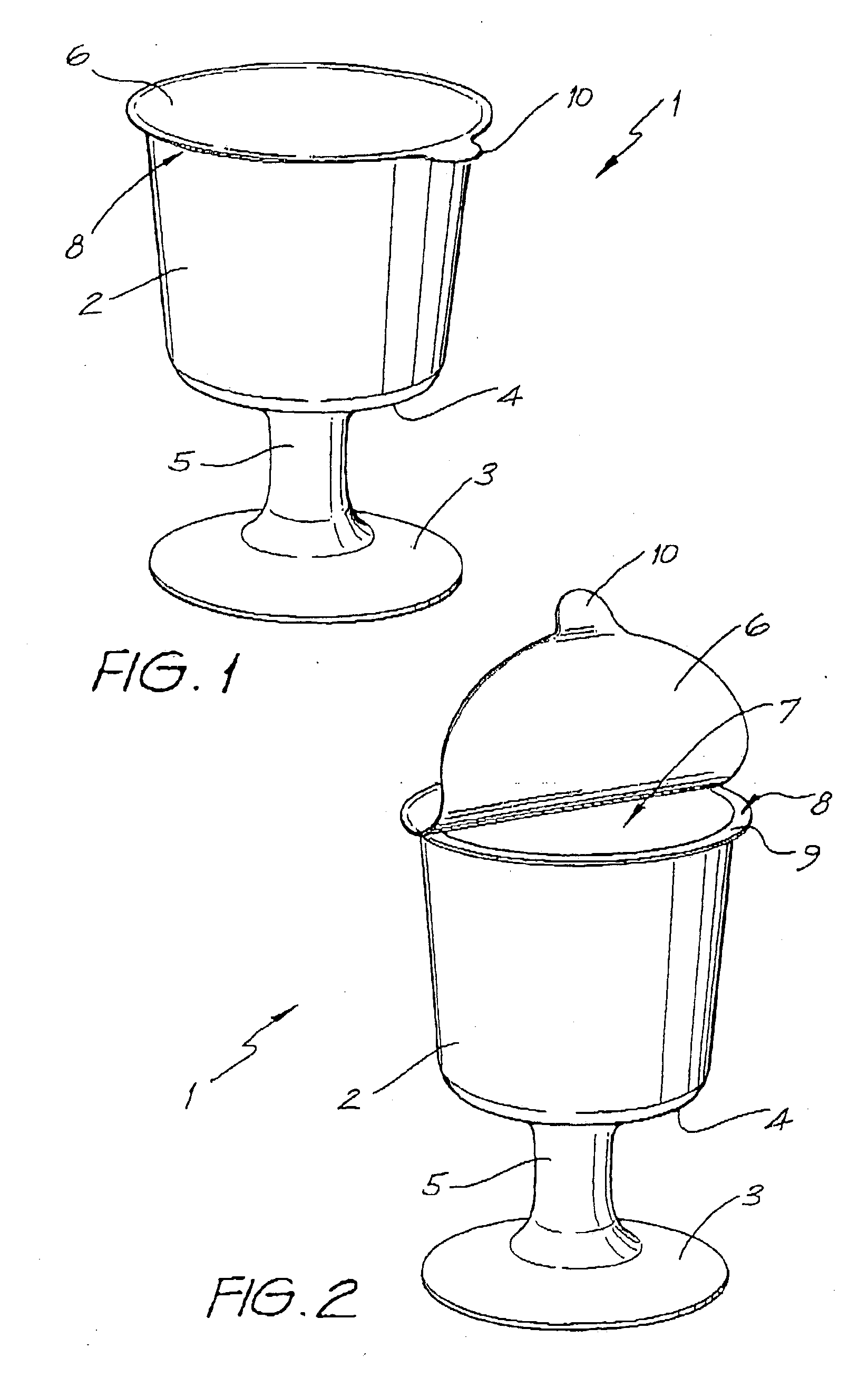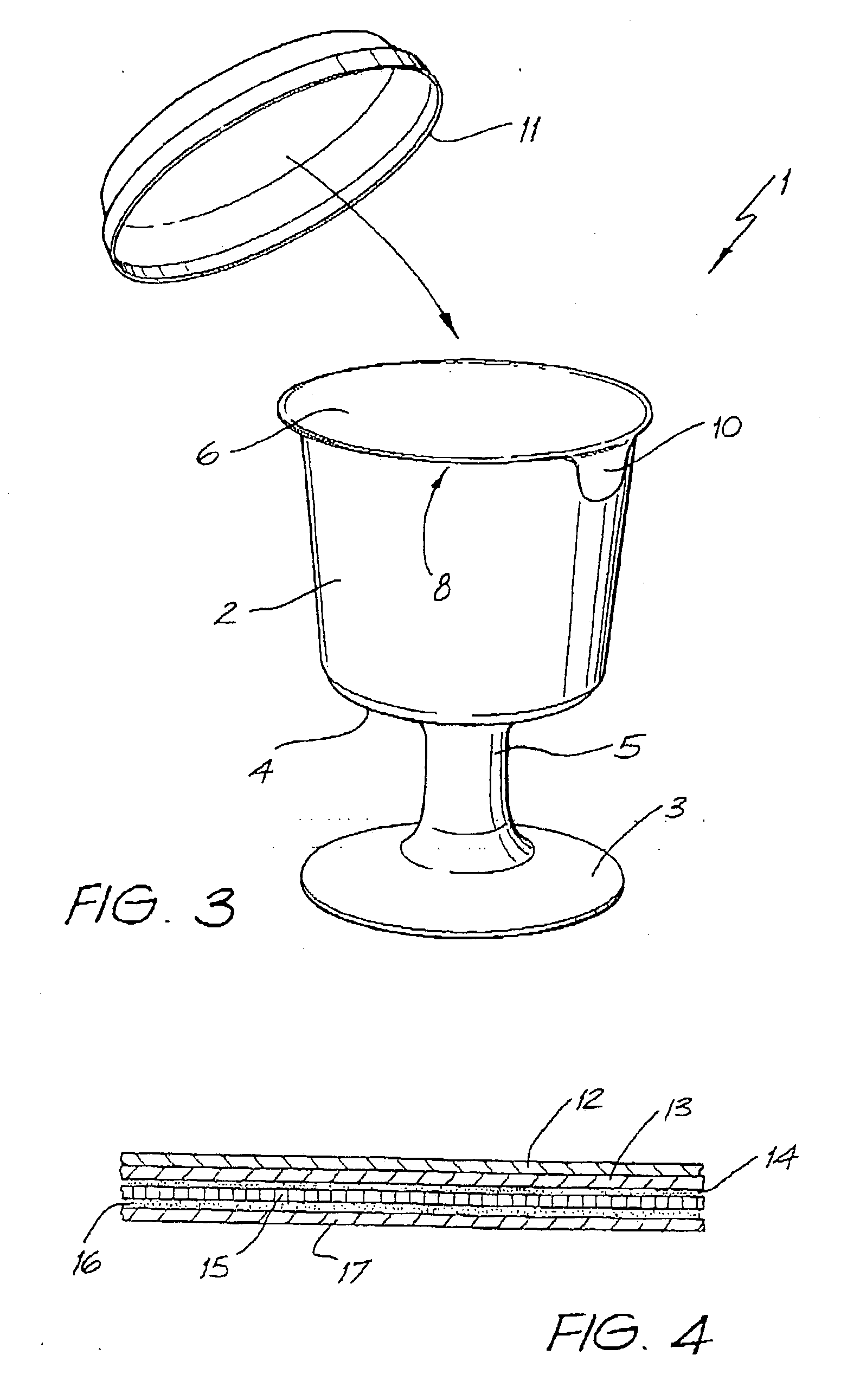Alcoholic beverage container
a technology for alcoholic beverages and containers, applied in drinking containers, packaging under special atmospheric conditions, food preservation, etc., can solve the problems of rotted cases, inconvenient and time-consuming for attendants to fill consumers' glasses, and containers that have not gained market acceptance, so as to improve the sealing membrane configuration and prolong the shelf life
- Summary
- Abstract
- Description
- Claims
- Application Information
AI Technical Summary
Benefits of technology
Problems solved by technology
Method used
Image
Examples
Embodiment Construction
[0024] The present invention will now be described in more detail according to a preferred but non limiting embodiment and with reference to the accompanying illustrations wherein;
[0025]FIG. 1: shows an elevation of a known container for holding an alcoholic beverage;
[0026]FIG. 2: shows the container of FIG. 1 with the sealing membrane peeled away from the peripheral flange around the open mouth of the receptacle;
[0027]FIG. 3: shows the container of FIG. 1 with a sealing cover;
[0028]FIG. 4: shows a schematic view of a multi layer arrangement for the receptacle;
[0029]FIG. 5 shows a cross sectional elevation view of the single serve container of FIG. 1; and with recessed sealing membrane according to a preferred embodiment of the invention.
[0030]FIG. 6: shows a cross sectional elevation view of a single serve container with recessed sealing membrane according to a preferred embodiment of the invention.
[0031] Referring to FIGS. 1 and 2 there is shows a known container I for alcoh...
PUM
 Login to View More
Login to View More Abstract
Description
Claims
Application Information
 Login to View More
Login to View More - R&D
- Intellectual Property
- Life Sciences
- Materials
- Tech Scout
- Unparalleled Data Quality
- Higher Quality Content
- 60% Fewer Hallucinations
Browse by: Latest US Patents, China's latest patents, Technical Efficacy Thesaurus, Application Domain, Technology Topic, Popular Technical Reports.
© 2025 PatSnap. All rights reserved.Legal|Privacy policy|Modern Slavery Act Transparency Statement|Sitemap|About US| Contact US: help@patsnap.com



